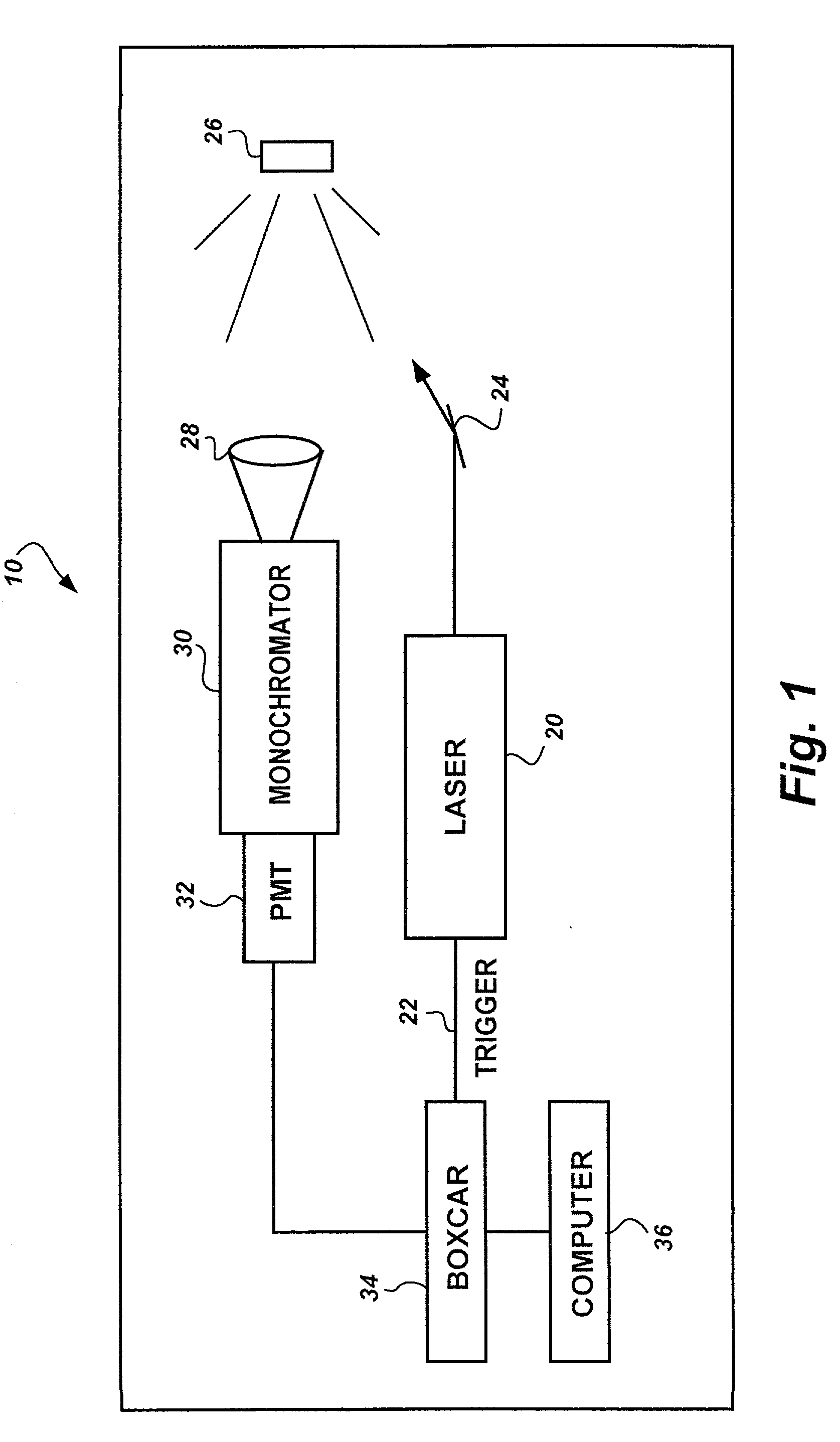Method for characterization of petroleum oils using normalized time-resolved fluorescence spectra
a technology of time-resolved fluorescence and petroleum oil, which is applied in the field of spectroscopy, can solve the problems of insufficient distinguishing ability to discriminate between crude oils of closer grades, inability to use techniques in remote sensing, and inability to achieve the effect of detecting the distance between crude oils and the closest grades
- Summary
- Abstract
- Description
- Claims
- Application Information
AI Technical Summary
Problems solved by technology
Method used
Image
Examples
example 2
Fingerprinting of Marketed (blended) Crude Oils Using Excitation Wavelength of 355 nm
[0108] Marketed crude oils are usually prepared as blends of assorted virgin crude oils extracted from different separate wells, and combined in certain proportions to produce products of specific chemical and physical properties. Because of this blending, however, the differences between the fluorescence spectra of the final products diminish as compared to those between the original virgin crude oils, making it harder to distinguish blended crude oils from each other than to distinguish virgin crude oils from each other on the basis of any fluorescence technique. The situation becomes worse if, on top of that, an excitation wavelength unsuitable to excite the light aromatic compounds is used.
[0109] In the following experimental procedure these conditions are challenged using the method introduced in this invention to show the advantage of this technique over the other available time-resolved fluor...
example 3
Using the Normalized Time-Resolved Fluorescence Spectra to Monitor the Degradation of Lubricant and Transformer Oils
[0121] The above-described inventive technique may be applied to monitor the degradation of refined oils, such as lubricant and transformer oils. This is advantageous over other analytical, electrical, or mechanical methods since the present fluorescence method can be performed without sample preparation.
[0122] The difference between crude oils and lubricants (or transformer oils) is that the latter represent basically a certain thermal cut of the crude oil that is mixed with certain additives to serve as oxidation inhibitors. It is shown that the final products do fluoresce when excited by UV radiation and that the shapes of the time-resolved fluorescence spectra of the fresh and the degraded oils vary in different manners. A car-engine lubricant (Fuchs Super GT 20W / 50) was chosen to investigate the degradation time-resolved fluorescence properties. The samples consid...
PUM
 Login to View More
Login to View More Abstract
Description
Claims
Application Information
 Login to View More
Login to View More - R&D
- Intellectual Property
- Life Sciences
- Materials
- Tech Scout
- Unparalleled Data Quality
- Higher Quality Content
- 60% Fewer Hallucinations
Browse by: Latest US Patents, China's latest patents, Technical Efficacy Thesaurus, Application Domain, Technology Topic, Popular Technical Reports.
© 2025 PatSnap. All rights reserved.Legal|Privacy policy|Modern Slavery Act Transparency Statement|Sitemap|About US| Contact US: help@patsnap.com



